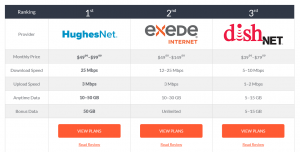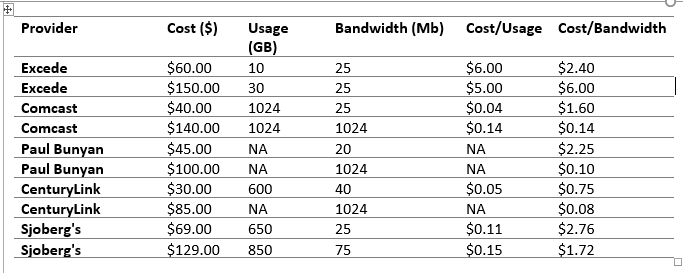How does satellite work?
What does Satellite mean for the end user
Benefits
- Satellite reaches everyone in Minnesota
- Recent improvements mean access to speeds of 25 Mbps down and 3 Mbps. Faster than some rural areas have now.
- Satellite works well for web browsing, sharing and viewing video
Drawbacks
 Costs are high
Costs are high
- Setup cost 0-$199
- Monthly cost $49.99-$129.99 based on data allowance and download speed
- Early termination fees
- Costs and/or usage are based on data allowances, which can mean unexpectedly higher bills or throttling of speeds. These can create real issues for people doing work, homework or health care online. (On average American families use an average of 100 GB data per month.)
- Latency is 20 times higher with satellite than terrestrial broadband and means the following applications won’t work well or not at all
- VPN (aka teleworkers logging into the network/intranet at work)
- Teleconferencing (such as Skype or Webex)
- Gaming and simulation.
Understanding Satellite Pricing
Satellite monthly fees are based on speed AND usage.
- Speed provides the capacity to interact online. The FCC has a guide to help track speed requirements by activity. For example, streaming an HD video requires 4 Mbps connection (download). To figure out your speed requirement, you’ll have to consider all users of broadband – every laptop, smartphone, ipad and the Internet of things for each member of your household or office.
- Usage tracks accumulation of data. For example, an HD movie may be 3 to 5 GB. It’s like a cup that gets filled. Depending on you provider you may pay more if you overfill your cup, your connection maybe slowed down if your cup gets filled or your provider may not have data caps (aka data allowances) so you can interact online (download or upload) without limitations. Many people have experience with usage on mobile contracts – but cellular providers aren’t the only ones that track and charge by usage.
We looked a cost for a number of different national and state broadband providers. (See table and chart below.) Some technologies (such as fiber) don’t track usage. Others focus on use as much as speed. For those considering satellite Internet, they need to know that it is priced similarly to cellular data service, by the GB of data use.


You can see that the satellite service is more expensive for both bandwidth and data usage. The price for data usage, at $5 or $6 per GB compares very unfavorably to the dimes and nickels charged by landline providers. For all providers except satellite, the lower bandwidth services have the highest price per Mb.
The value in the wired environment is the ability to scale from 25 Mb to a Gb and to have the network capability to deliver hundreds of GB of data every month to every customer. Most sources now put monthly household data use at 100 GB and that number is constantly growing. You will also see two providers have no data cap for their Gigabit service.
For rural residents that use data for school, business, health care or other date-heavy activities, it is clear that satellite is an expensive or very limiting broadband option. Satellite’s best feature may be that it is an option for all rural residents.
How are the costs calculated?
- Cost/Usage — Usage cost per GB ($60 for 10 GB = $6 per GB)
- Cost/Bandwidth (Connection speed) — Bandwidth cost per MB ($60 for 25 Mb = $2.40 per Mb
With the help of some friends, we have created a broadband cost analysis spreadsheet that you can use to help calculate the unit cost of your broadband.
